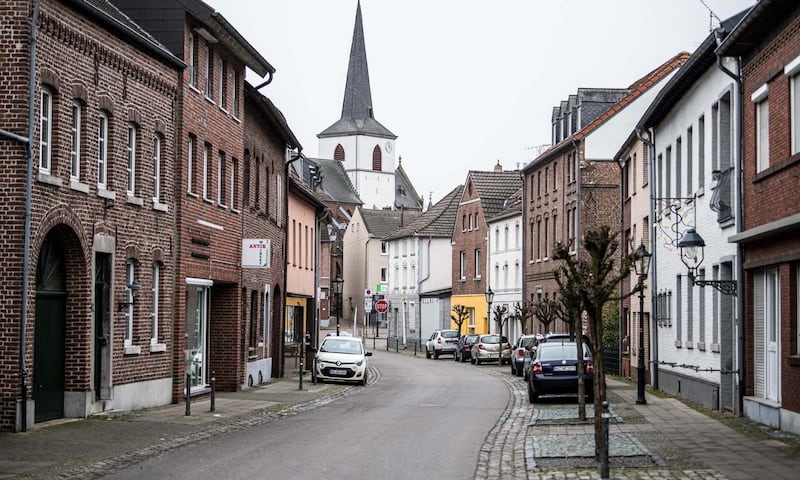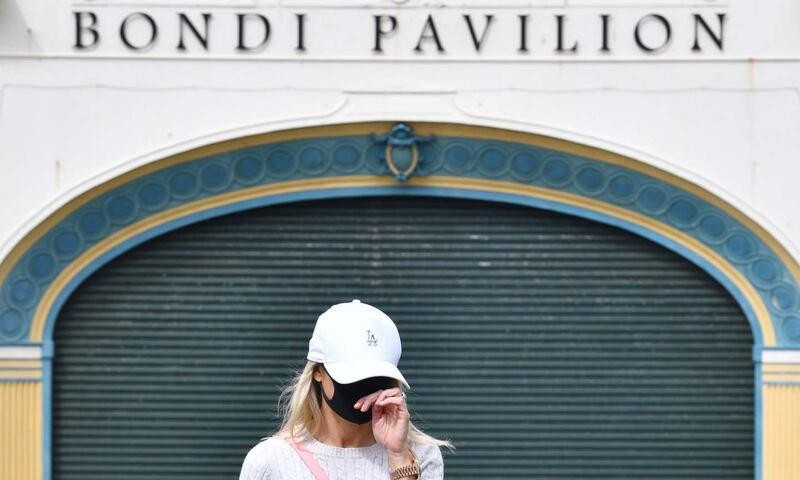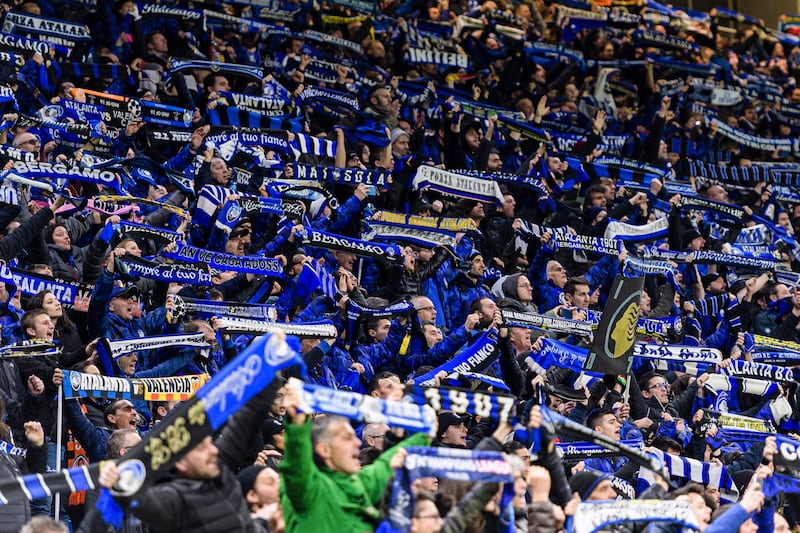On February 15th a merry crowd wearing clown wigs and jester hats gathered in the town hall of Gangelt, a small German town nestled by the Dutch border, to ring in the peak of the carnival season.
Beer and wine flowed aplenty as about 350 adults in fancy dress locked arms on long wooden benches and swayed to the rhythm of music provided by a live band.
During an interval in the programme, guests got up to mingle with friends and relatives at other tables, greeting each other as Rhineland tradition commands, with a Bützchen, or peck on the cheek.
Every country most heavily hit by the pandemic has reported similar stories of social, cultural or religious gatherings where large numbers spent numerous hours in close company, which then turbo-charged the spread of the virus
A carnival committee of 11 men in red-and-white uniforms compered the four-hour event and gave speeches on topical issues. Covid-19, the virus that had been detected on German soil for the first time two weeks earlier, was not among them.
Yet coronavirus is the single reason why the carnival session in Gangelt is now drawing close attention from scientists from around the world: seven people who walked out of the event later tested positive for the virus. A 47-year-old man who performed in the “male ballet” at the Gangelt carnival was the first person in Germany admitted to intensive care with the infection.
Gangelt is in the Heinsberg district, which is home to 42,000 people and has since had 1,442 infections and 43 fatalities, more than any other administrative district in the country. The national media has started to refer to it as “Germany’s Wuhan”.
A hundred days after a Chinese government website announced the discovery of a “pneumonia of unknown cause”, it has become clearer that the dynamics behind the virus’s rapid expansion across the globe has relied heavily on such “cluster effects”.
Each of the countries most heavily hit by the pandemic has reported similar stories of social, cultural or religious gatherings where large numbers spent numerous hours in close company – holding hands, kissing, sharing drinks from the same glass – which then turbo-charged the spread of the pandemic.
"One pattern we are seeing across the globe is that wherever there was singing and dancing, the virus spread more rapidly," says Prof Hendrik Streeck, a virologist at the University of Bonn whose team of researchers has spent the past week carrying out the first "Covid-19 case cluster study" in Heinsberg.
“Most infections didn’t take place in supermarkets or restaurants,” Streeck says of his preliminary findings. In Heinsberg, his team of coronavirus detectives could find scant evidence of the virus being transmitted via the surfaces of door handles, smartphones or other objects.

Early theories that the virus at the carnival party in Gangelt could have been transmitted through the dishwater in the kitchen turned out to be a red herring: most guests drank their beer from bottles.
Instead, he says, transmission took place at “events where people spent a length of time in each others’ close company”, such as apres-ski parties in the Austrian resort of Ischgl, the Trompete nightclub in Berlin and a soccer match in Bergamo, in Italy.
"Mass events are a perfect opportunity for the virus, as people meet total strangers," says Niki Popper, a mathematician at Vienna's Technical University whose team has been developing a simulation that could help governments predict the development of the pandemic more accurately.
Instead of merely multiplying the number of daily cases by a certain factor, Popper’s example tries to account for what he calls the starting point of “local epidemic networks”.
“If you have 100 or 200 people spend enough time in a room with a person carrying the virus, then for example 20 might walk out with the new infection and, after a few days’ incubation time, pass it on to their families and workmates, let’s assume 10 more people each. Within a few days, the virus can thus multiply 200 times with only one new incident – and then continue.”
‘We shared cups’
Large parties played a key role in the pandemic's rapid expansion not just in central Europe but also in the United States and Australia. New York may now be the centre of the US outbreak, but the traditional festivities around Mardi Gras are thought to have been a catalyst for a large outbreak in New Orleans.
On February 25th the entire city, with almost 400,000 residents, and an estimated tourist crowd of 1.4 million people from all over the world, were swallowed up in a tide of music, floats, extravagant costumes, cocktails and revelry for the climax of carnival.
As is traditional in this Louisiana city on the Mississippi, gatherings and parades had begun weeks before, from January 6th onwards. Many people flung the doors of their houses open and crammed in friends, family, neighbours, strangers – all jostling, dancing, hugging, eating and drinking together.
There were no social restrictions during carnival. Only weeks later, on March 20th, did the mayor of New Orleans issue a stay-at-home order for the city, with Louisiana ordering statewide restrictions two days later, closing schools and all nonessential businesses.
The first death in the city occurred on March 13th, and by March 22nd Louisiana had 837 cases, of which 70 per cent were clustered in New Orleans. On April 1st the death toll in the state reached 273.
Mardi Gras was the perfect storm: it provided the perfect conditions for the spread of this virus. We shared cups. We shared each other's space in the crowds
"Mardi Gras was the perfect storm: it provided the perfect conditions for the spread of this virus," says Rebekah Gee, head of Louisiana State University's healthcare services division. "We shared cups. We shared each other's space in the crowds. People were in close contact catching [strings of] beads. It is now clear that people also caught coronavirus."
For health authorities that were still trying to track and contain individual infections at this stage of the pandemic, party clusters represented a particular challenge, as revellers would often travel from and return to other regions, other countries or even other continents.
In Australia, for example, at least 30 people, including backpackers, became infected after attending a crowded dance party at Bondi Beach’s Bucket List pavilion on March 15th.
The party took place the night before restrictions came into force on gatherings of more than 500 people, during a weekend of mixed messages from the authorities. Australia’s prime minister was urging people not to gather in large numbers but also saying he would go to a football game.
Many of those who attended the Back to Boogie Wonderland – Tropicana event, which told people to release their “inner Caribbean dancer”, later retired to local backpacker hostels with dorm rooms and shared facilities.
The Waverley council area, which encompasses Bondi and its backpacker community, has now become a hot spot for Covid-19, with many of its 140 cases linked to bars, clubs and restaurants, including the Bucket List.

Pray-ins and funerals
In many countries, partygoers and organisers have found themselves on the receiving end of a backlash. In Australia, the Bucket List’s Facebook page is full of livid comments condemning “idiots” who gathered to party. In Germany, cars with Heinsberg number plates have had their windows smashed and have been jeered as “corona spreaders”.
But the novel coronavirus did not require social gatherings to have an overtly hedonistic character to flourish. In the week of February 17th-21st, about 2,500 worshippers gathered at the Porte Ouverte Christian church in the Bourtzwiller district of Mulhouse, in Alsace in eastern France, for one of the most anticipated events in the evangelical calendar.
They came from far and wide, including from France’s overseas territories and Corsica, for a week of fasting and prayer that has been held annually for the past 25 years.
"During the five days, the worshippers greeted each other, pecked each other on the cheeks, and held hands, sometimes while praying during the services," Nathalie Schnoebelen, spokesperson for the church, said afterwards.
At the time nobody thought more of it; it would be almost a month before France went into a national lockdown. A small cluster of coronavirus cases had broken out in the unfortunately named Contamines ski resort, in the Alps, but most coronavirus cases were still confined to China.
Contrary to what certain politicians have said, we didn't ignore the basic rules, because at the time there were not any
“Contrary to what certain politicians have said, we didn’t ignore the basic rules, because at the time there were not any,” Schnoebelen said.
It was only after the congregation at the Porte Ouverte had dispersed and several worshippers tested positive for the coronavirus that concerns were raised. Among those who tested positive were the church's main pastor, Samuel Peterschmitt (son of Jean Peterschmitt, who founded the Porte Ouverte church in 1966).
In total 18 people from the Peterschmitt family tested positive for Covid-19. Samuel Peterschmitt’s son Jonathan admitted that worshippers had been in close confines for a week in “conditions relatively ideal if a virus wants to develop”.
By the time it had been identified as a cradle for the virus, church worshippers had unwittingly passed it on to others. A nurse who had been at the Porte Ouverte is believed to have originated a cluster that contaminated 250 colleagues at Strasbourg University Hospital, where she worked.
Two retired worshippers returned to their home in the Ajaccio region of the Mediterranean island of Corsica. There are now at least 263 positive cases and 21 deaths on the island.
A delegation of five churchgoers from French Guiana, led by their evangelical pastor Gilles Sax, returned to the French overseas territory, on the northeast coast of South America, on February 25th. Sax said he felt ill and was "trembling like a leaf" as soon as he returned.
Other worshippers returned to cities and towns across France: Orléans, Besançon, Saint-Lô, Belfort, Dijon, Maçon, Briançon, Paris. By March 8th about 100 coronavirus cases had been linked to the church prayer week.
Today, Mulhouse is one of the worst-hit areas in France, with local hospitals overwhelmed by patients with the coronavirus.
Christophe Lannelongue, until Wednesday director general of the regional health authority, said: "It was a kind of atomic bomb that fell on us at the end of February, and we didn't notice it."
In Italy, which has recorded the highest number of deaths as a result of the virus, a Champions League football match between Bergamo and Spanish team Valencia on February 19th has been described as the “biological bomb” that turned the north of the country into the centre of the country’s outbreak.

But scientists like Massimo Galli, the head of the infectious-disease unit at the Sacco Hospital in Milan, believe the spread is more likely to have accelerated in smaller clusters in the valleys around Bergamo.
“We know Covid-19 is particularly efficient at transmitting within familial groups,” Galli says. “In osterias crowded with elderly people, it would have found a perfect environment.”
A similar gathering that brought together older and younger citizens preceded an outbreak of the virus in Italy’s southeast. On March 3rd hundreds of people gathered to pay their last respects at a funeral in San Marco in Lamis, a small city of 13,000. The 74-year-old man being buried had died after complications of what seemed to be a case of seasonal flu.
Until that day there had been seven cases of coronavirus infection in Puglia, the heel of Italy’s boot. The photographs of patients in the red zones of northern Italy, and the first fatalities in Lombardy, seemed unimaginable, much like the national lockdown that was extended a few days later across the entire country.
Soon after the funeral, however, the man’s wife, who had just begun mourning her husband, received a call informing her that he had tested positive for coronavirus.
A postmortem revealed the man was infected with Covid-19, but the result came out only after his body was released to the family for the funeral
According to Ludovico Vaccaro, head of the public prosecutor's office in Foggia, "a postmortem revealed the man was infected with Covid-19, but the result came out only after his body was released to the family for the funeral. They should have waited for the result of the test before handing over the man's body."
Authorities say that, a few days earlier, the man had travelled to Cremona, in the north of Italy, to visit his daughter. Upon returning, he began to experience flu-like symptoms.
According to doctors and investigators, the man had infected his daughter and wife before he died. At the funeral they then came into contact with dozens of relatives and friends who gave their condolences to the family with handshakes and hugs, opening a gateway for one of the first clusters in southern Italy. As a result, 110 people were quarantined, dozens of whom tested positive for coronavirus. Two have died.
The prosecutor’s office in Foggia has begun an investigation into what the governor of Puglia has called a “catastrophic error”. Behind one of the most dramatic cases of the virus’s spread is human error: if doctors had waited for the test results before handing over the body to family members, perhaps dozens of people could have avoided infection.
A loop, not a curve
Thinking of the coronavirus pandemic as a process that can speed up dramatically through human clusters also affects the considerations of policymakers who are plotting a route out of the lockdown. When governments start to relax the current social-distancing measures, can they also afford to allow large social, cultural or religious gatherings to go ahead?
“The image of the Covid-19 epidemic as a curve has taken hold in the collective imagination, but my fear is that we are actually dealing with a loop,” says Popper, the mathematician. “As soon as restrictions are loosened there could be new clusters that allow the spread to accelerate again.”
The story of the pandemic in Vietnam serves as a cautionary tale.
The southeast Asian country recorded its first cases of coronavirus on January 23rd, a development that prompted swift action from officials. Vietnam kept many schools closed following the traditional lunar-new-year holiday late, in January, and on February 1st banned flights to and from China. It also became the first country outside China to introduce a mass quarantine, when, on February 12th, officials isolated villages about 40km from Hanoi that were home to 10,000 people.
Vietnam had detected no new cases for three weeks when a flight from London touched down at Hanoi’s Noi Bai International Airport on March 2nd. Among the hundreds of passengers aboard was a 27-year-old Vietnamese woman returning after a trip to attend exclusive fashion-week events in Europe. Along with her sister, she had sat among guests at a Gucci show in Milan, and watched Yves Saint Laurent in Paris, documenting her travels on Instagram.
The woman later told the New York Times that she had flown to Milan on February 18th and that, at the time, “no one was talking about the virus”. She travelled to Paris on February 25th, she added, and said she felt fine when she flew home that week.
Days after arriving back in Vietnam, she developed a cough and tested positive for coronavirus, becoming the country’s “patient 17”. As of April 7th, Vietnam has 245 confirmed infections. The effort to trace and contain the virus has to start all over again. – Guardian









